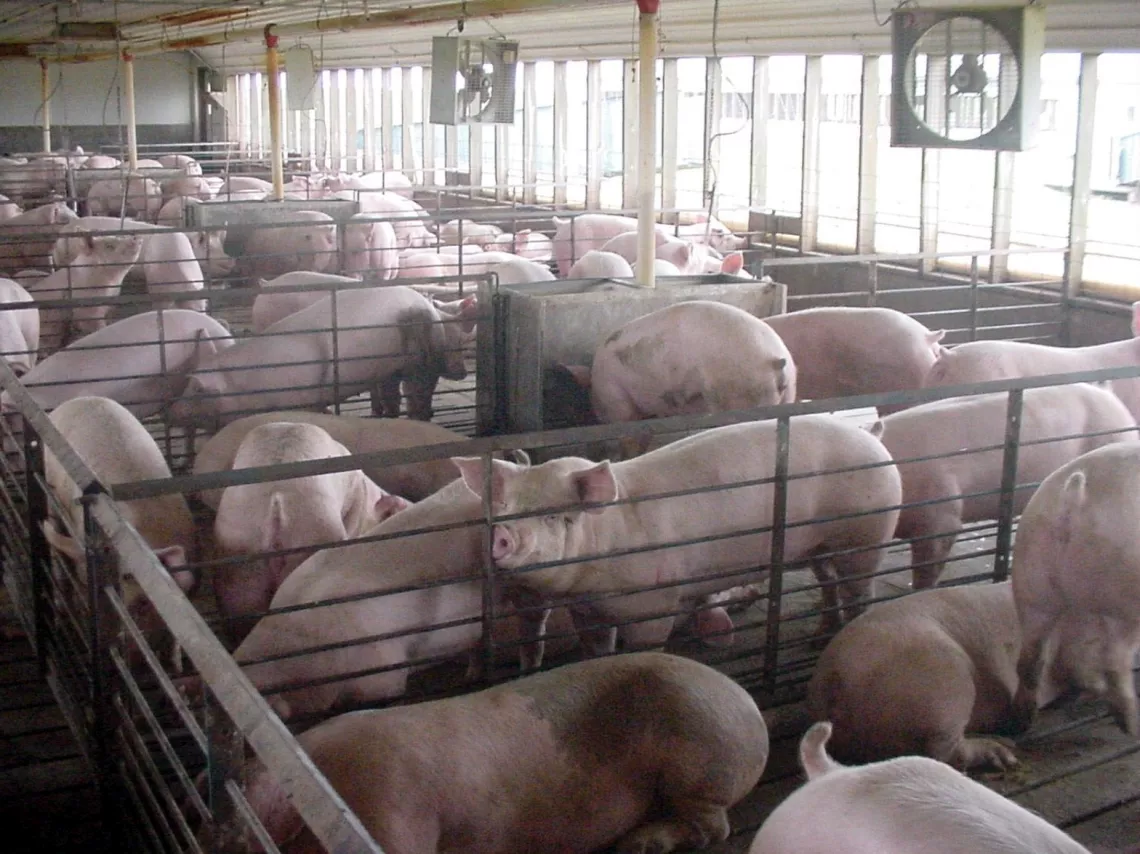CAFO: a Concentrated Animal Feeding Operation. This is what they look like.

Contact Craig
CAFO is the polite term for an industrial meat production facility.
The U.S. Environmental Protection Agency (EPA) defines animal feeding operations (AFOs) as agricultural enterprises where animals are kept and raised in confined situations. There are approximately 450,000 AFOs in the United States. When AFOs reach a certain size, about 1,000 cows or 2,500 hogs, they are classified as concentrated animal feeding operations (CAFOs). CAFOs congregate animals, feed, manure and urine, dead animals, and production operations on a small land area. Feed is brought to the animals instead of allowing them to to graze in pastures, fields, or on rangeland.
Kansas hosts some of the nation's largest CAFOs, mainly cattle feedlots, dairies and hog factories, located primarily in the drought-prone areas of western Kansas. This includes a cattle feedlot permitted for 150,000 cows, a dairy permitted for 35,000 cows, and a hog factory permitted for 198,000 mature hogs. In the 1990s the Kansas Chapter worked with rural citizens who were fighting new hog CAFOs and succeeded in getting new regulations through the legislature. Although these changes require CAFOs to report more data that help us monitor their environmental impacts, they don't protect our aquifers and do little to shield neighbors from dangerous dust and noxious odors. We continue our efforts to hold the Kansas Department of Health and Environment (KDHE) accountable for the unhealthy pollution of rural air and water.
Sierra Club Policy on Food and Agriculture
earthjustice Sierra Club Report - Building Decarbonization
Swine Production and Environmental Stewardship (EPA)
History of the Kansas CAFO Struggles
Sierra Club vs. Andersen, Memorandum Decision and Order (December 6, 2019)
Sierra Club Joins Petition to EPA (Waypoints, December 1, 2021)
As Massive Livestock Operations Move In, Fighting Them Gets Harder For Rural Neighbors (Kansas Reflector, June 14, 2021)
Sierra Club Blows the Whistle on KDHE Plan to reform hog farm regulations (Kansas Reflector, May 25, 2021)
KDHE’s actions on Hog CAFOs don’t pass the smell test (Waypoints, April 29, 2021)
KDHE Continues to Indulge Big Hog Producers (Waypoints, March 28, 2019)
New Study: CAFO Barn Fires Kill Millions of Farm Animals (Waypoints, December 29, 2018)
A Move To Shift Some Flint Hills Burning into the Fall (Waypoints, August 2018)
Range Management Practices are Biggest Threat To Grassland Birds (Planet Kansas, August 2016)